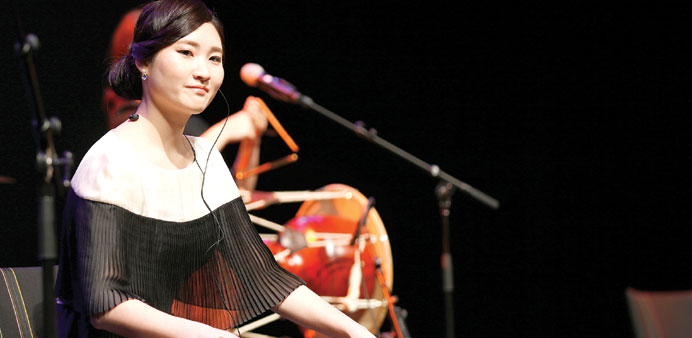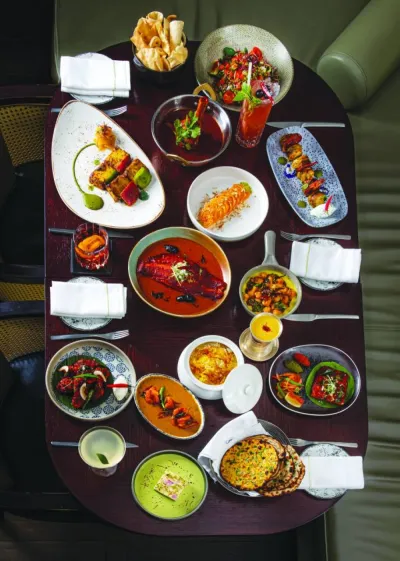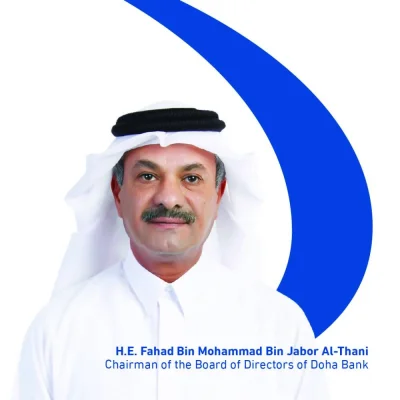By Umer Nangiana
A scintillating mix of traditional and modern sides of Korean culture was on show as spectacular dance performances and soulful music celebrated 40 years of Korea-Qatar diplomatic relations.
As the trumpet sounded, folk dance performers attired in traditional costumes entered the stage swirling in a beautiful formation, mesmerising the multicultural audience at Qatar National Convention Centre (QNCC).
Dancers gave way to folk musicians who played centuries-old instruments at the heart of Korea’s tradition. B-boy performers engaged the audience with their urban dance.
“I am very happy to introduce some best performing teams from Korea to Qatar. All of them have won awards, for example B-boy team was awarded in UK world contest and other two groups are also number one in Korea,” said Korean Ambassador Chung Keejong, while speaking to Community about the cultural show.
“We are celebrating 40th anniversary of establishment of diplomatic relations between Qatar and Korea which have strengthened year by year,” the ambassador added. He said the two countries’ relationship is based on two important fields; energy and construction. “I would like to extend this co-operation to other fields, especially culture and art. So tonight’s event is very important for us to introduce Korean traditional and modern culture to Qatar,” Keejong added.
The three performing teams were The Gwangdae, a group of young artists who have been presenting their unique reinterpretation of traditional Korean performing arts; Coreyah, a folk music group which consists of four Korean traditional musicians, one guitarist, and one world percussionist, as well as Morning of Owl, an internationally recognised B-boy performance team.
Gwangdae staged four performances including Pangut (traditional Korean percusion quartet), Lion Play, Sogo drumming and Beona (dish spinning). The spinning of a long tail attached to a sort of a farmer’s hat around the performer’s body was the highlight of the show.
It is a dance form called Pungmulnori where the performers moves the strip attached to the hat in circles and all around his body with the help of the movement of his neck.
“Neck is only to give it direction. The actual energy to move and spin it comes from the performer’s knees. In fact the entire body is involved in the dance,” Dae Chon An, one of the lead performers from the Gwangdae group said after the show.
He said the dance form was very traditional, dating back to five centuries. In Pangut, clowns go in a procession playing percussion instruments such as janggu (hourglass-shaped drum), buk (barrel drum), kkwaenggwari (small metal gong), jing (large metal gong) and taepyeongso (conical wooden oboe).
The Lion Play involves a mask dance drama from the Bongsan region of Korea, depicting a lion that descends to earth to punish the evil deeds of people. During the performance, the lion (mascot) besides moving in circles and performing solo tricks, comes ‘dangerously’ close to the audience.
Above all, the Gwangdae performers truly enthralled the viewers with Beona, the dish spinnig. They even allowed some of the members of the audience to spin the dish on sticks which none of them could get it right. It is an act that requires great skill. The performers spin and fly plate-shaped props on long sticks with extreme mastery.
Coreyah, the folk music group comprised four traditional musicians, a guitarist and a percussionist. The group provided solid Korean character with the rough tone of traditional instruments and unique singing technique.
Geomungo, a hybrid of a stringed-instrument and a drum, was the source of some soulful tunes. Heon Ki, Kim, a member of the group said that the instrument can be customised according to the musical composition.
Kim also played some traditional instruments that produced birds’ sounds in certain compositions. “It is again a very traditional instrument and I mix my own style into playing it,” he added.
Coreyah were invited to the 2012 Belgium World Music Festival “sfinks Mixed”. They have so far made four tours to Europe besides Edinburgh Fringe Festival where it received the highest score in 2013.
All the four melodies, Let’s Make a Feast, Full Moon, A Walk into the Sea and Dondollariyo were touching. The last one represents the desire for a promising future to overcome the agony of everyday life.
The performance by the Morning of Owl was extraordinary. The internationally recognised performance team took storytelling and dramatic interpretation beyond B-boying.
Kyu Min, An, a member of the group said that this form of urban dance was originally from Korea. “ We have incorporated some uniqueness into it so that we can empathise with the audience. It is all ours,” said An.
In one of the performances called City, they displayed some break dance and street dance techniques combined with the projection of images showing the glamour of the city, showing how the people living in urban culture try to harmonise with the city.
They also performed acts such as ‘parachute landing’, Phantom and Dust Motes where each dancer contributes to the perfection of the piece.
Morning of Owl is officially recognised as number one in the world. The team has won numerous awards, including B-boy championship UK, R16 World Final Winner Korea and Block Party Battle France. It also received praise after premiering Harmonize at the Breakin’ Convention, one of the biggest B-boying festivals held Sadler’s Theatre in UK.



